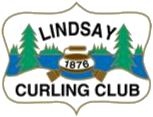Burned Rocks Rules
First off, let's deal with"Moving Stones":
Rule 10 (1) A stone in motion shall not be touched by any player, equipment or personal belongings of the team to which it belongs. If this occurs the moving stone is now deemed "burned", however, what happens next depends where the infraction has occurred. Rule 10 (2) (a) states that if the rock is between the tee line at the delivering end and the hog line at the playing end and is touched by the delivering team, the touched stone is removed immediately from play by that team. Rule 10 (3) describes what happens if the rock has crossed the hog line at the playing end and is touched or "burned".
If the moving stone is touched by the team it belongs to all stones are allowed to come to rest, after which the non-offending team has the option of removing the rock and replacing all the stones that were displace after the infraction to their original positions OR leave all the stones where they came to rest OR place all the stones where it reasonably considers the stones would have come to rest had the moving stone not been touched.
Basically, the non-offending team gets to either remove the burned rock, allow it to stay where it comes to a stop or put the rocks where they think they would have ended up if the rock had not been touched.
Now let us have a look at "Displaced Stationary Stones":
Rule 11 (1) If a stationary stone which would have had no effect on the outcome of a moving stone is displaced it is replaced in its original position. Rule 11 (2) If a stone which would have altered the course of a moving stone is displaced all stones are allowed to come to rest and then the non-offending team has the option to: leave all stones where they came to rest; remove the stone whose course would have been altered from play and replace in their original positions any stones that were displaced after the violation; or place all stones in the positions the team reasonably considers they would have come to rest had a stone not been displaced.
Often in regular league play, when there are no on-ice officials, the non-offending team makes a decision on what course of action to take. However, In Rule 11 (3) it goes on to say that if the positions of the displaced stones cannot be agreed on by both teams the stone is redelivered after all displaced stones have been replaced to their original positions. If agreement on the original positions cannot be reached, the end is replayed. I have curled many years and I have never had to redeliver a rock or replay an end because two teams could not reach some kind of agreement. Fair Play in curling begins with the observance of the written rule; but Fair Play involves more than an unfailing observance of that written rule - Fair Play demonstrates a respect for teammates and opponents whether they are winning or losing! That is what makes our game of curling so unique. How many sports begin and end with a hand shake? How many sports have the members of both teams sit down after a game and have a conversation of how the game went or discuss a great shot being made? This is what makes curling such a great game to play.
